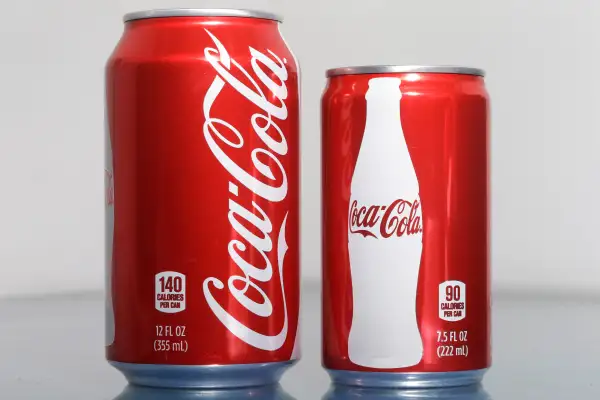How Coke Convinced Us to Pay More … for Less Soda

Soda sales may be in a slump, but one sliver of the soft drink market—the segment that comes in smaller than usual sizes, including those adorably tiny 7.5-ounce cans—is booming. What's especially curious about the trend is that sales have been taking off even though the smaller packages offer far worse value to consumers.
This week, the Associated Press explored this odd scenario, in which consumers are clamoring to buy Coke, Pepsi, and other sodas in unconventionally smaller sized packaging, notably the 7.5-ounce mini can that's generally sold in eight-packs in stores.
Previously, the Wall Street Journal reported that sales of smaller Coca-Cola packages—including the mini cans, as well as 8-ounce glass bottles and 1.25-liter plastic bottles—were up 9% through the first 10 months of 2014. During the same time period, sales of regular old 12-ounce cans and 2-liter bottles were as flat as a bottle of week-old Coke.
Beyond their nontraditional size, what all of the smaller soda items have in common is that they're "premium-priced packages." Yes, the value proposition in the trendy category is that you not only get less product, but you get to pay more for the privilege. Coca-Cola estimates that consumers typically pay 31¢ for each traditional 12-ounce Coke purchased in a 12- or 24-pack at the supermarket. By contrast, the average price per 7.5-ounce mini can breaks down to 40¢ a pop.
And remember, you're getting a lot less soda in the smaller cans. Tally up all of the soda in one of these eight-packs and it comes to 60 ounces, which is slightly less than the contents of one Double Gulp before 7-Eleven downsized it from 64 ounces to a mere 50. On a per-ounce basis, consumers are effectively paying double for the smaller packages: 5.3¢ per ounce for Coke in mini cans, versus 2.6¢ per ounce for the same beverage in 12-ounce cans.
What explains consumers' willingness to pay more for less soda? One explanation is that the mini cans are simply "freaking adorable," as one source put it when speaking to the AP. She's not the only one to think so. Last year, a marketing campaign deposited adorable mini kiosks—complete with adorable waist-high Coke vending machines selling adorable mini Cokes—in five German cities. Here's a look:
The result of this experiment, in addition to enough adorableness to make your head explode, was sales that were anything but small. Ogilvy & Mather Berlin, the firm behind the campaign, said that the kiosks averaged 380 cans sold daily, 278% higher than your typical Coke machine.
Mini sodas aren't selling like crazy just because they're cute, however. As we've pointed out before, consumers are attracted to small sodas—and beer—because they come with fewer calories than the regular sizes. The great (or sad) irony is that research shows that consumers tend to buy (and drink) far more sugary drinks when they're purchased in smaller packages. Therefore, whatever health benefits may have been gained via the small size is likely outweighed by the fact that you're consuming as many or more ounces of soda overall.
In other words, as nonsensical as it seems, it may be healthier for you to buy soda in larger sizes. It's certainly better for your wallet.
